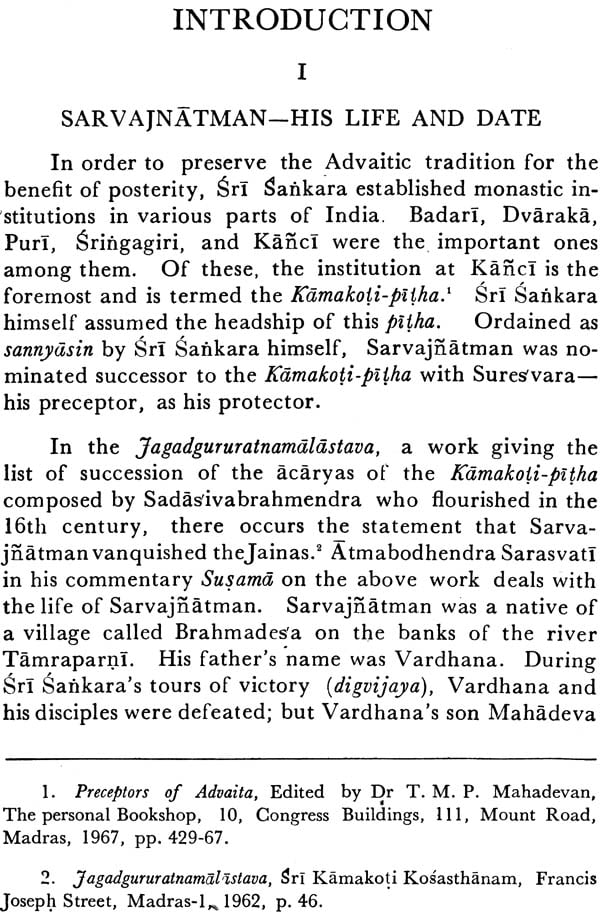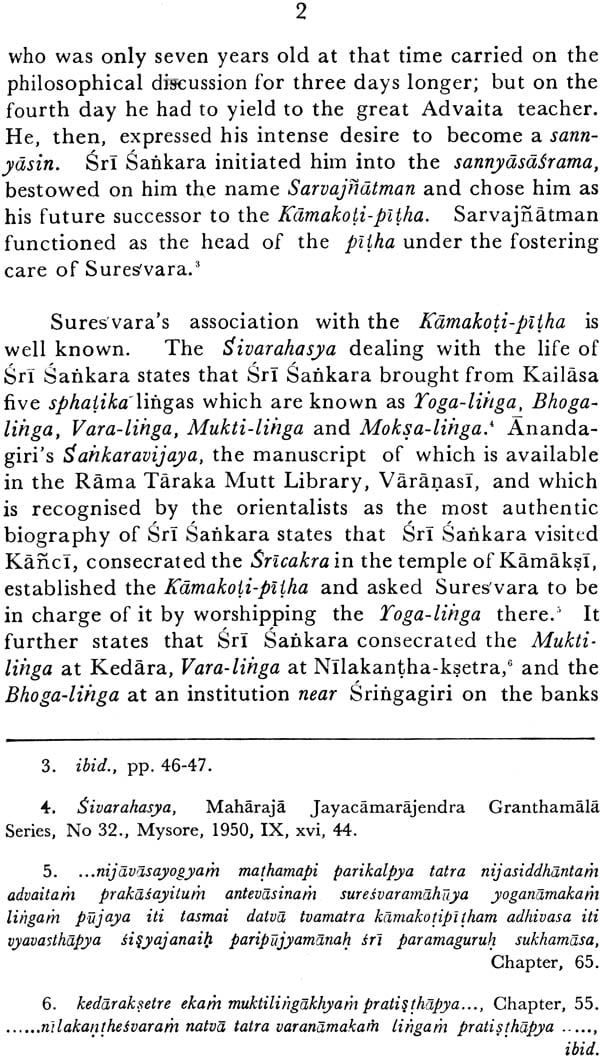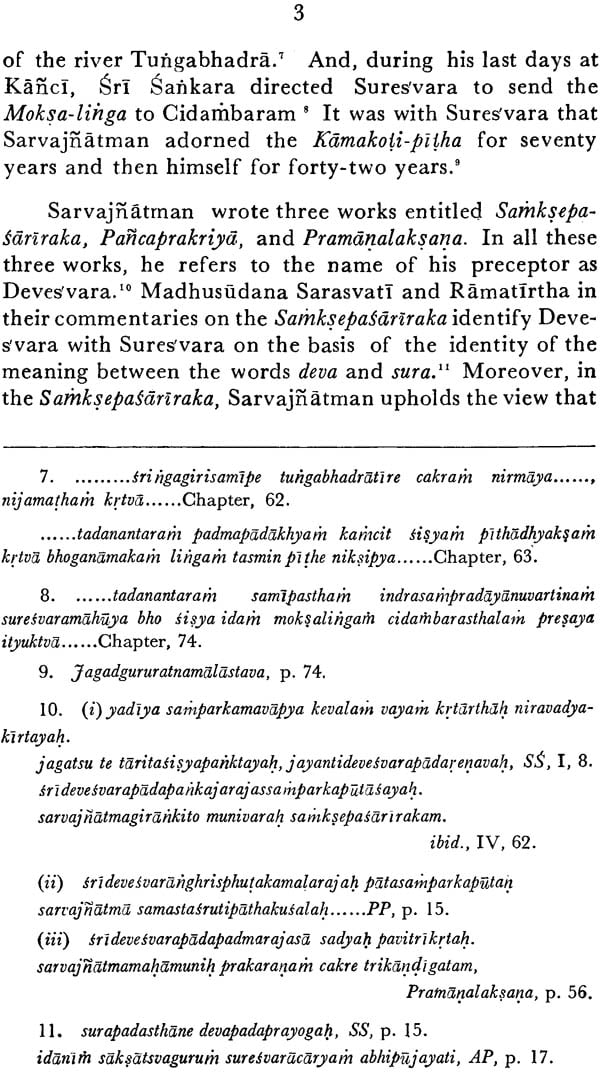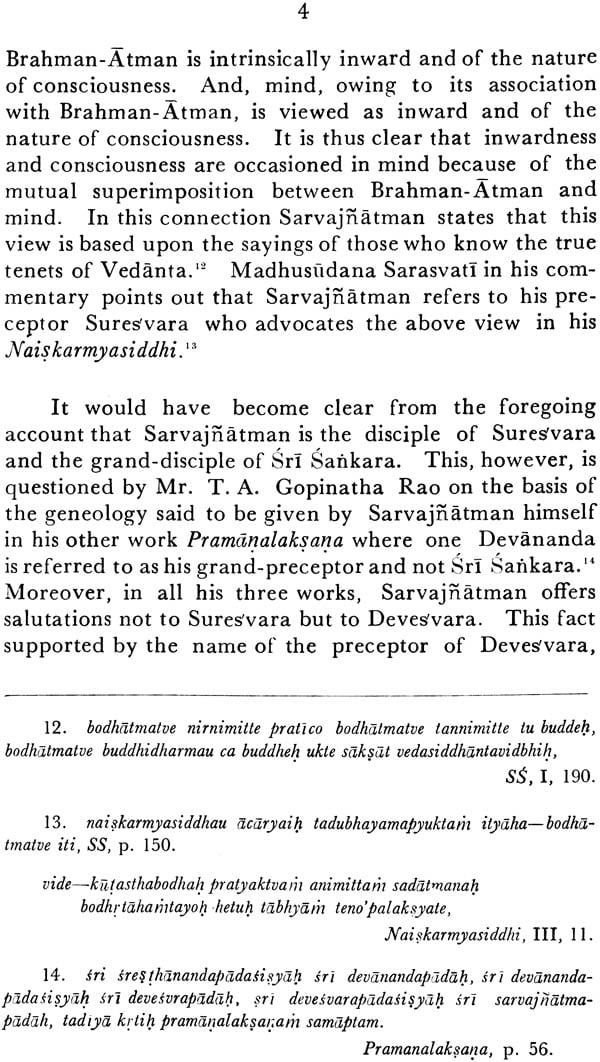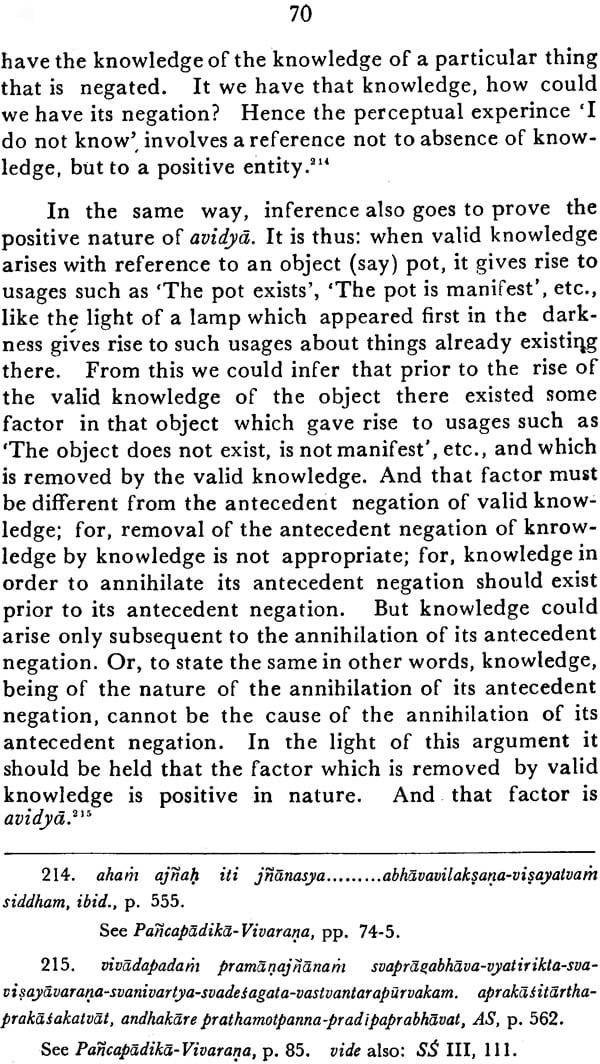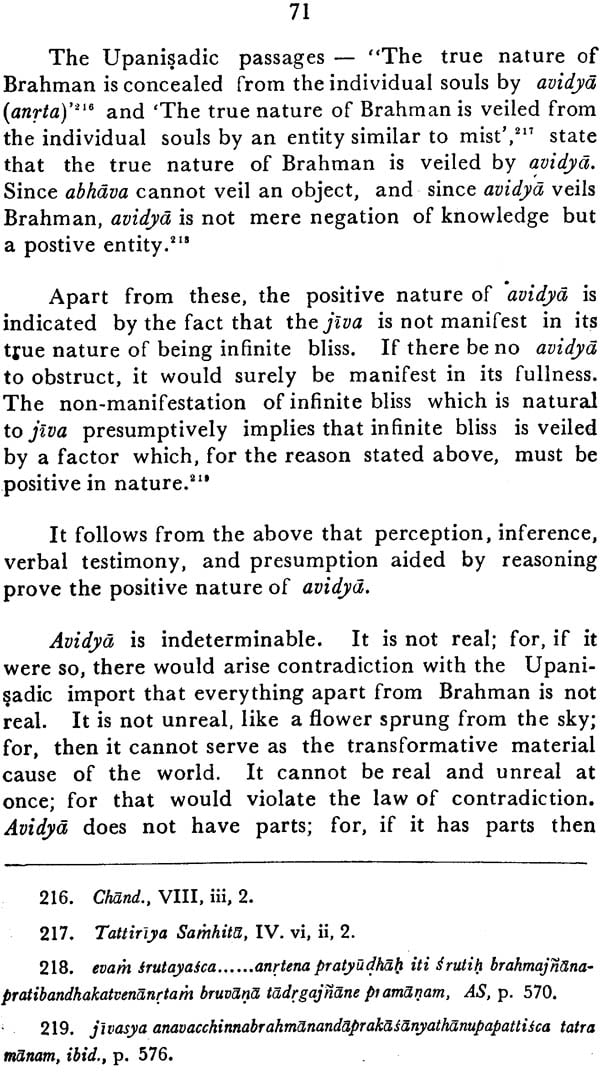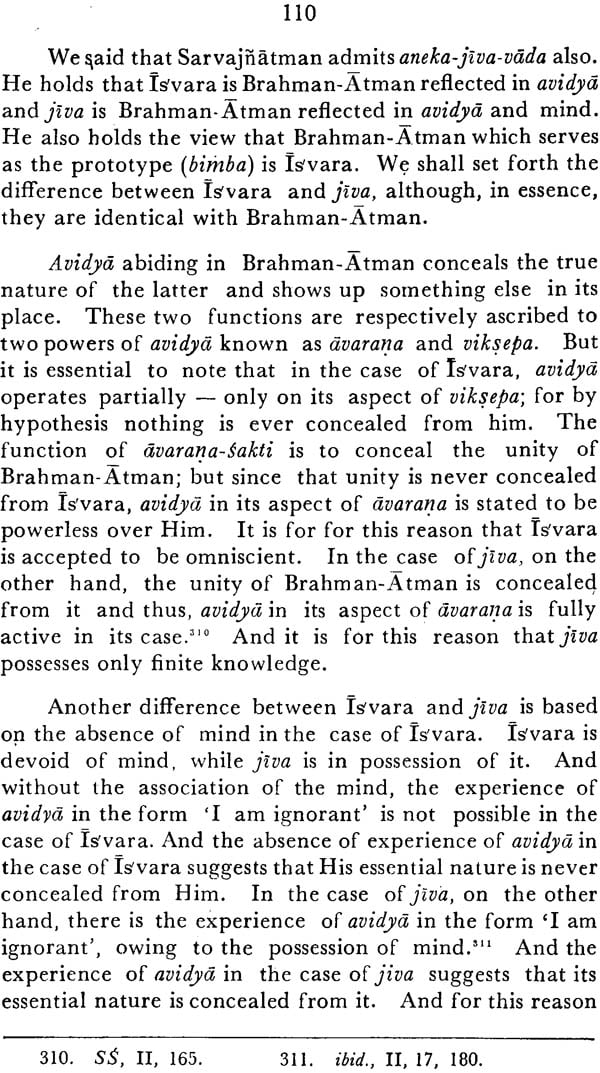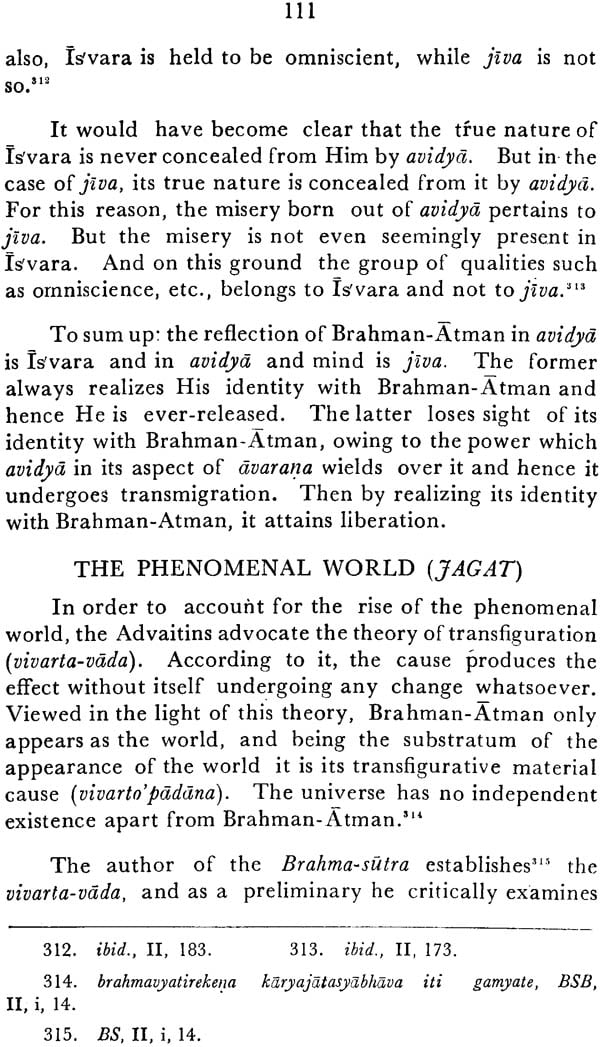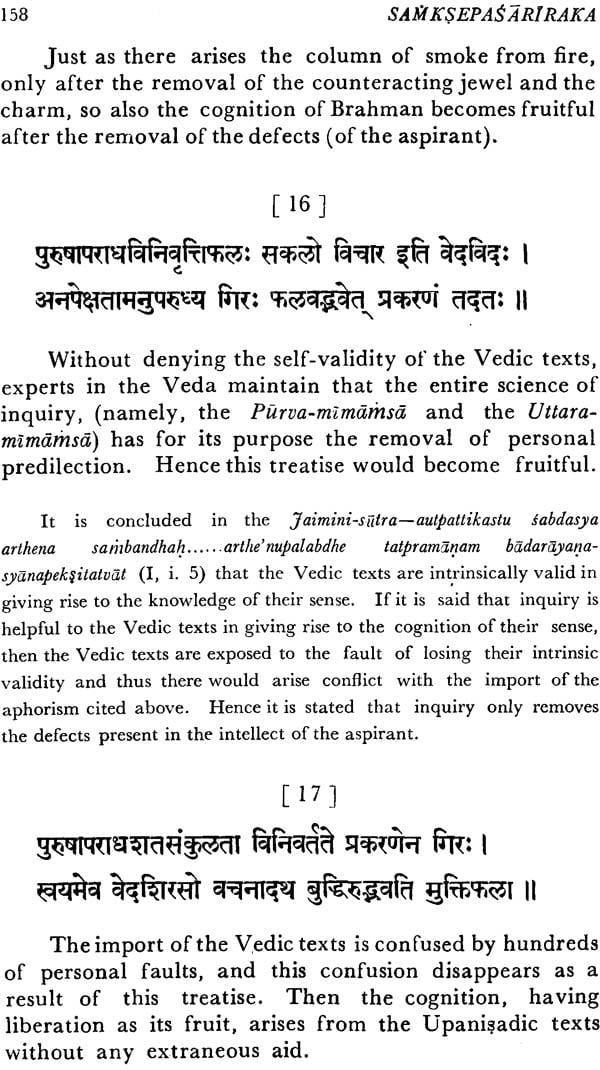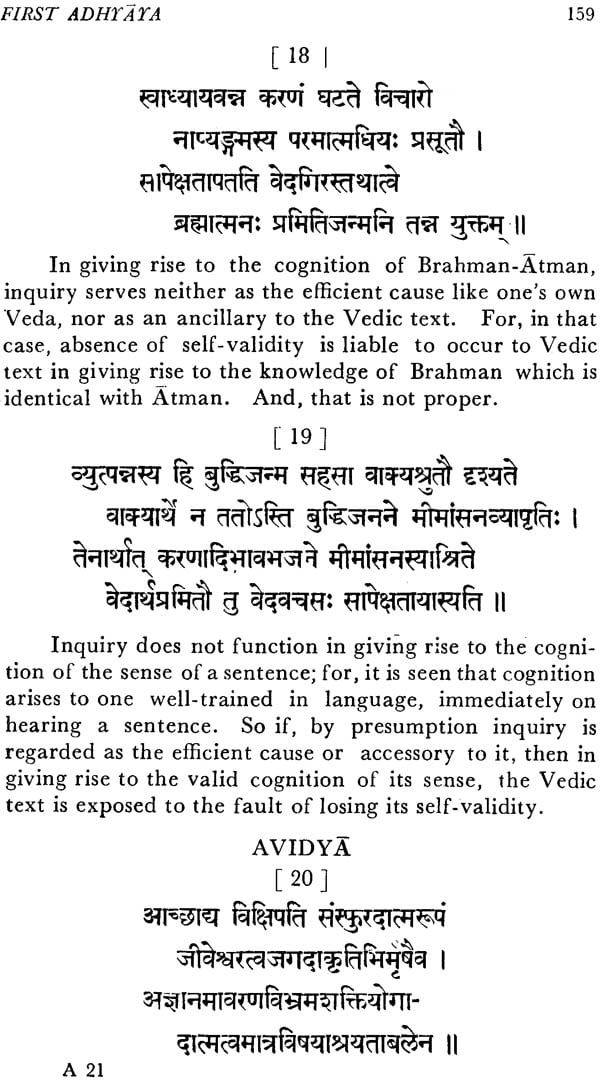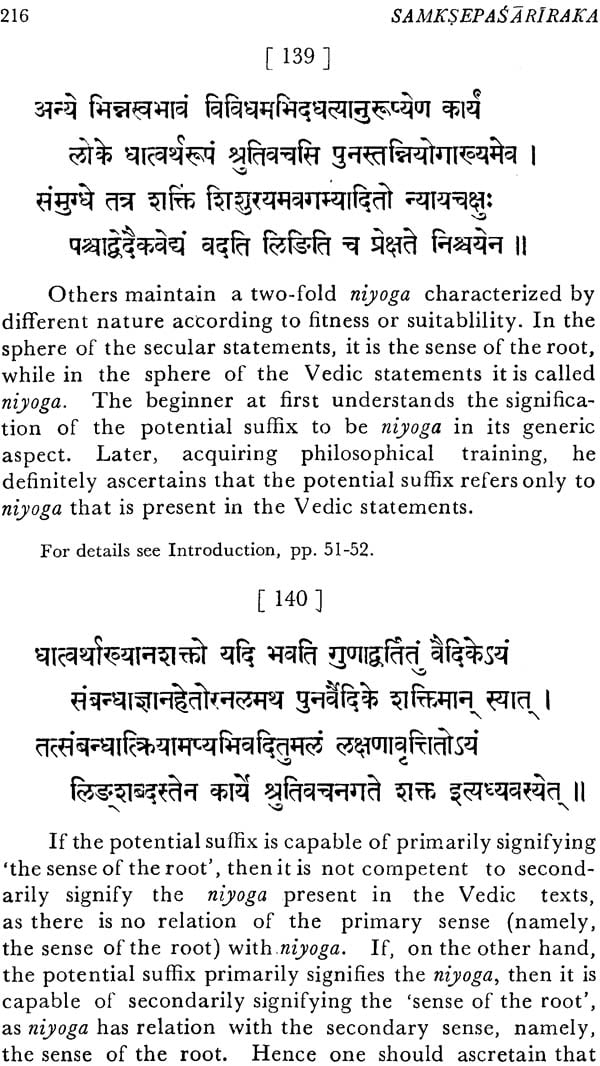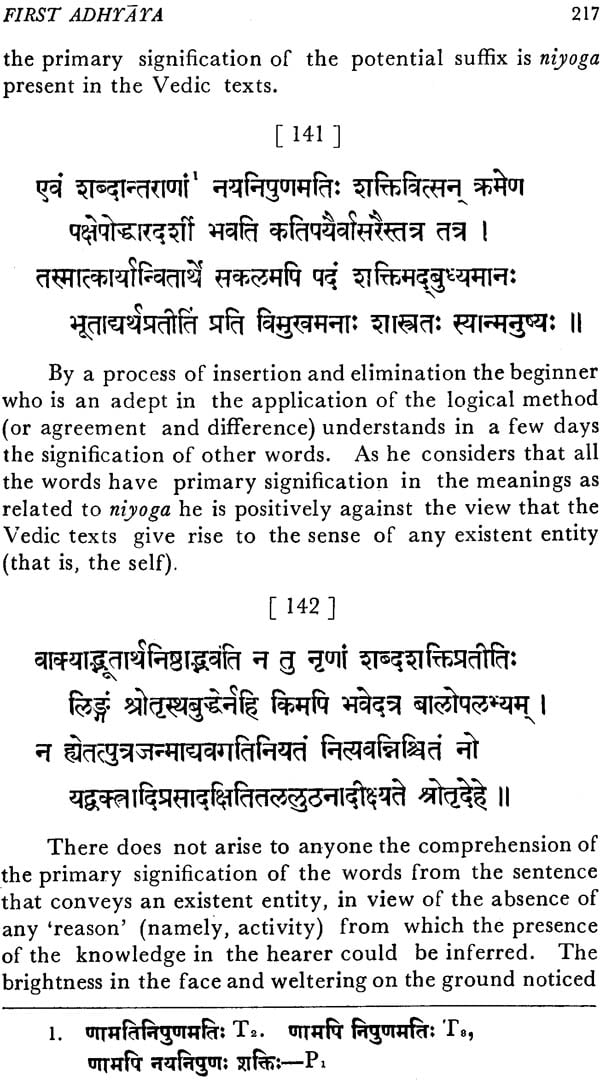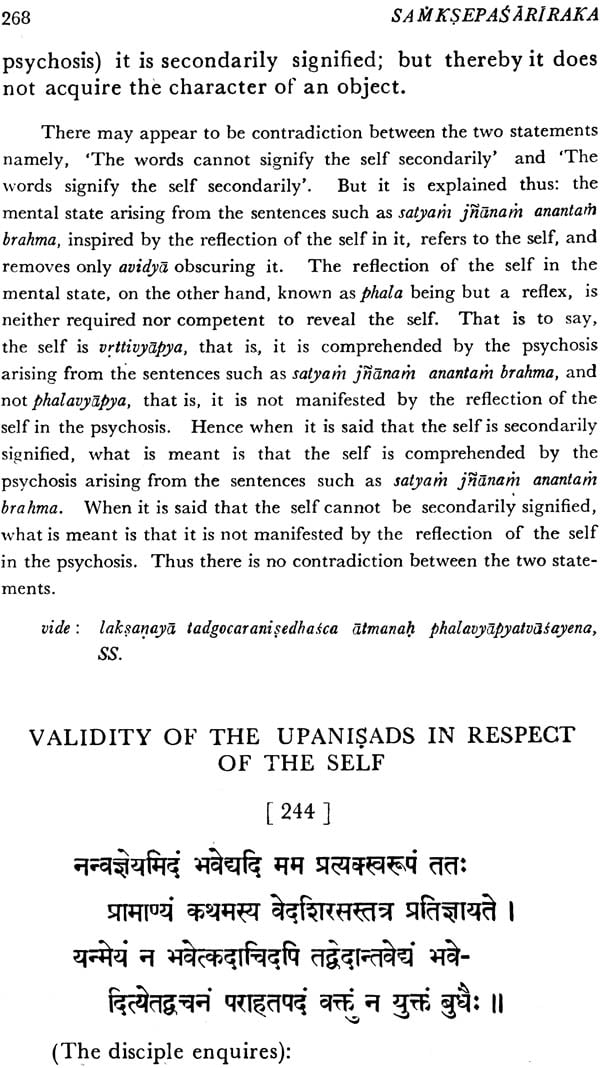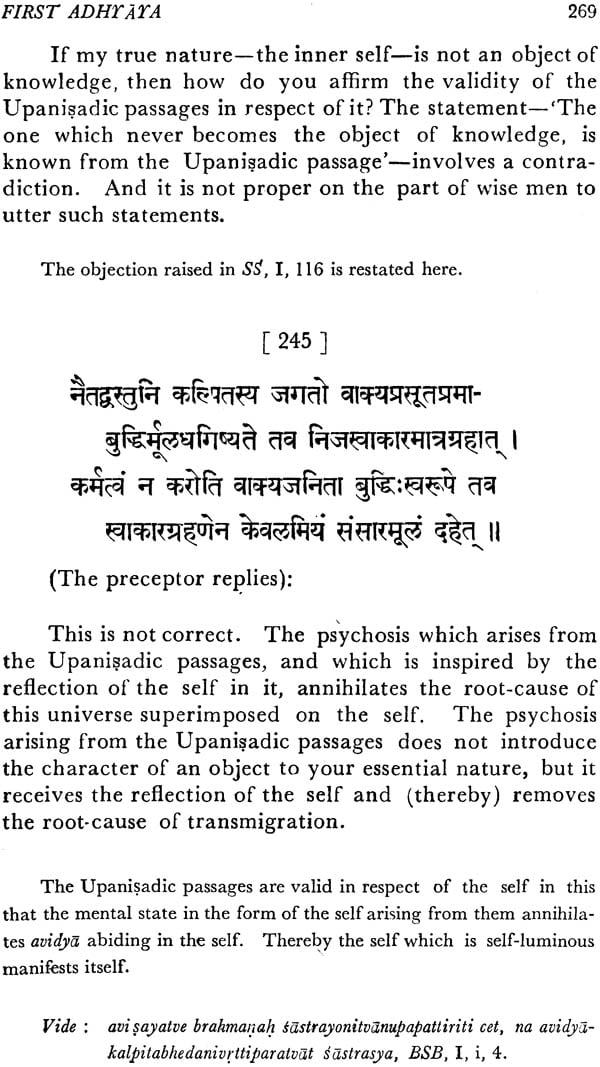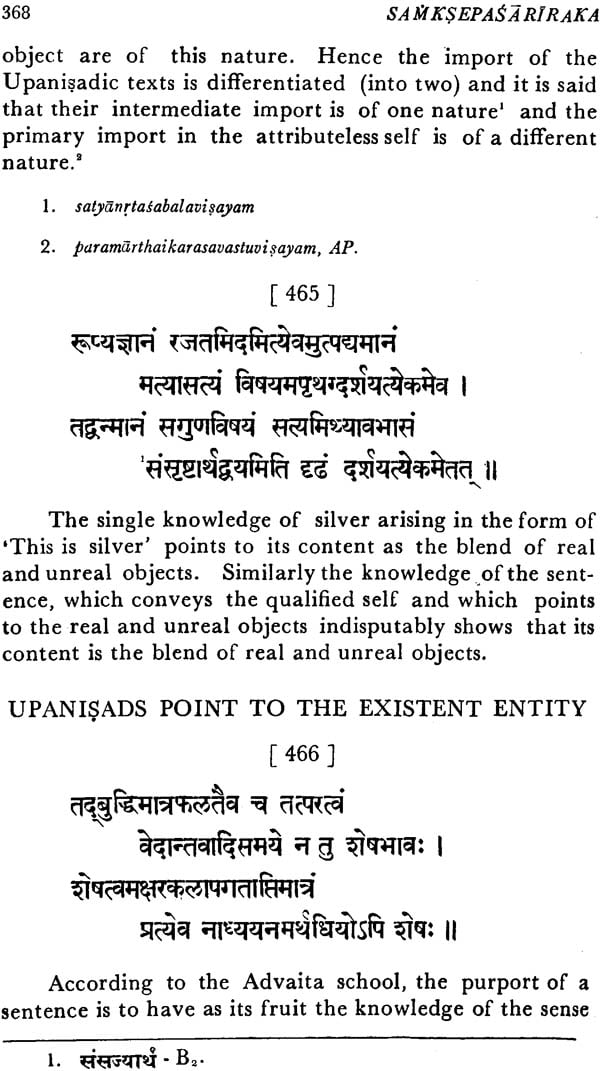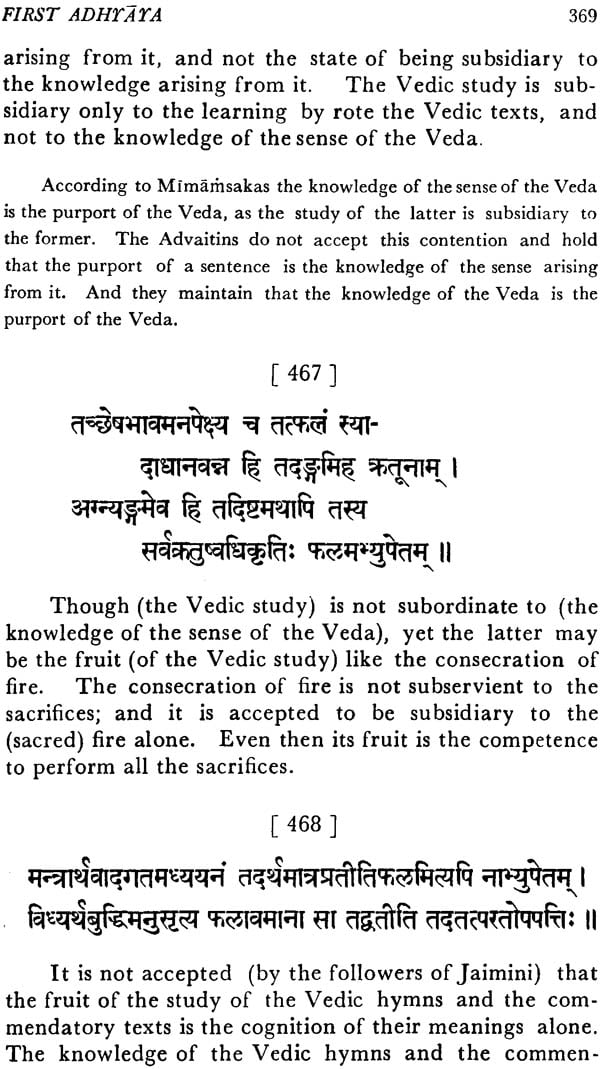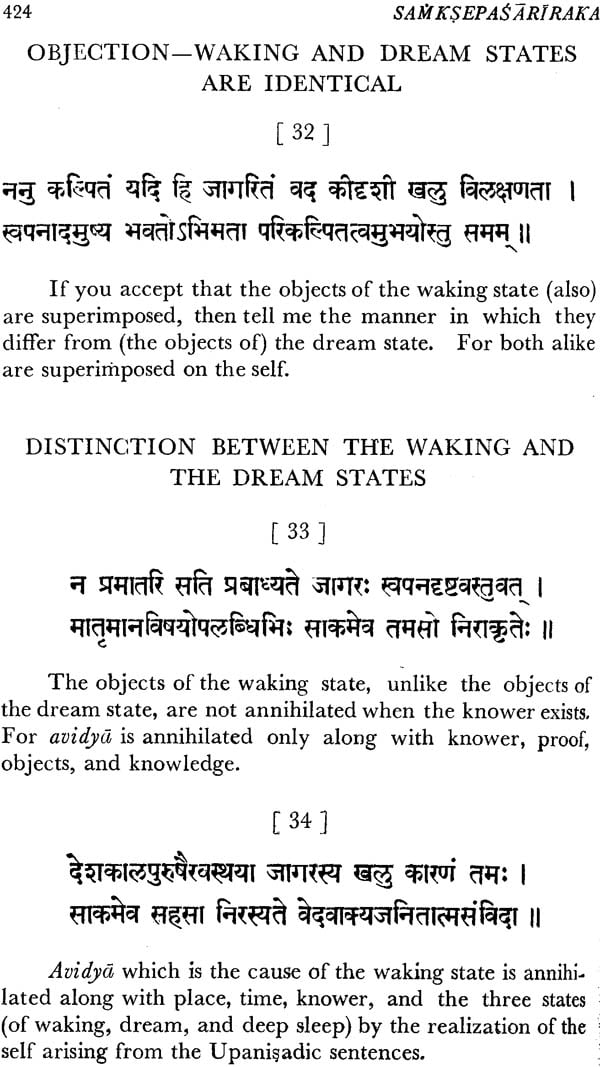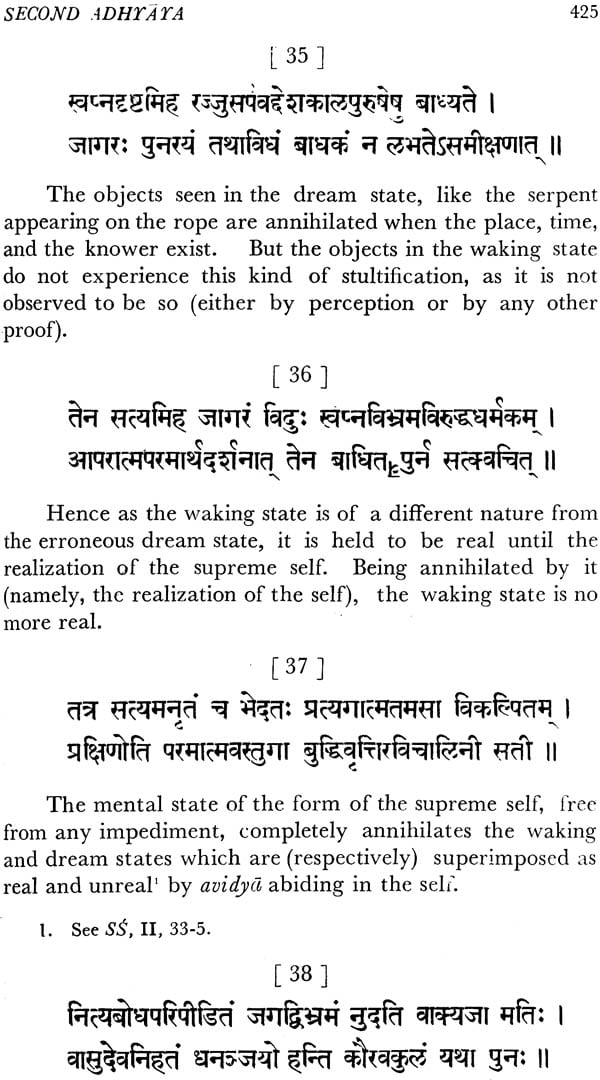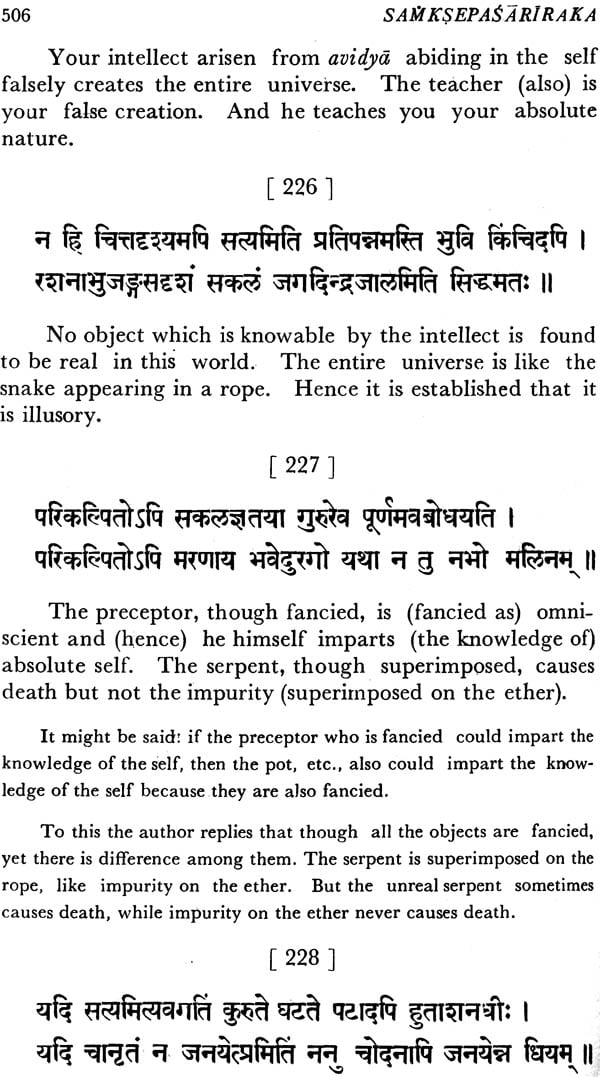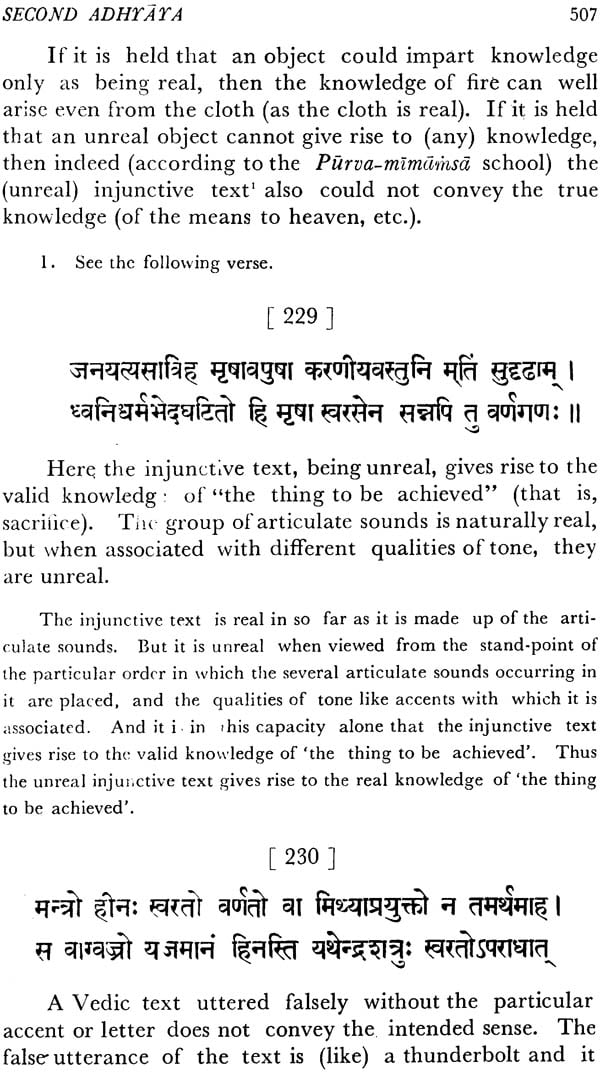
The Samksepasariraka of Sarvajnatman (An Old and Rare Book)
Book Specification
| Item Code: | NAJ970 |
| Author: | N. Veezhinathan |
| Publisher: | UNIVERSITY OF MADRAS |
| Language: | Sanskrit Text With English Translation |
| Edition: | 1985 |
| Pages: | 750 |
| Cover: | Hardcover |
| Other Details | 9.5 inch x 6.0 inch |
| Weight | 950 gm |
Book Description
Foreword
Dr N. Veezhinathan, Lecturer in Sanskrit at this Centre, worked as Research Scholar from 1960 to 1963 in the Deccan College Post-graduate and Research Institute, Poona, and wrote his doctoral thesis on the Samksepasariraka of Sarvajnatman. The thesis earned for him the Ph. D. Degree of the University of Poona in 1964. He joined this Centre as Lecturer, in 1964. My own observation of his thesis and the encomiums it has received from scholars who had occasion to see it made me feel that the thesis was a distinctively valuable contribution to scholarship in the field of Advaita and that its publication would do credit to any institution that sponsored it, more so to an institution like this Centre which has devoted itself to study and research in Advaita Vedanta for the past forty years. Accordingly, it was recommended for publication by this Centre, and, thanks to the publication grant made available by the University Grants Commission to the Centre and facilities provided by the University of Madras, it is now being published as No. 18 in the Madras University Philosophical Series.
The Samksepasariraka is an' important classic in the Advaita tradition, being a full metrical summary of the central teachings of Sri Sankara's Brahma-sutra-bhasya. The importance of the work for a student of Advaita is evident from the fact that it has eight commentaries, as Dr Veezhinathan has identified in his Introduction. The author of the work, Sarvajnatman, himself occupies a position of eminence in the line of preceptors following Sri Sankara, having been, according to tradition, ordained by the Bhagavatpada himself and nominated to succeed him and Suresvara in the central Sri Kamakoti-Pitha at Kanci.
The present work is a Critical Edition and English Translation of the classic, with a detailed Introduction, Notes, and Indexes. In the Introduction, Dr Veezhinathan discusses systematically the basic issues of Advaita Vedanta, such as Brahman, maya, adhyasa, jiva, Isvara, jagat, and moksa, and brings out the special contribution made by Sarvajnatman to the development of Advaita thought. The text has been definitively edited after collating several manuscripts. The translation is faithful and readable. The notes add to information and clarify subtle points. The four detailed Indexes render the edition highly useful to scholars.
I have great pleasure m commending this work to serious students of Advaita.
Preface
The present Critical Edition of the Samksepasariraka, a work on Advaita Vedanta, with Introduction, English Translation, Notes and Indexes, represents the research work completed under the guidance of the late Dr A. Sankaran, M.A., ph.d., Assistant Editor, Sanskrit Dictionary Department, and Honorary Professor of Sanskrit, Deccan College Post-graduate and Research Institute, Poona, for the Degree of Doctor of Philosophy of the University of Poona. The Samksepasariraka is a work of Sarvajnatman the disciple of Suresvaracarya ; it sets forth, in verses, the views of Sri Sankara as expounded i is bhasya on the Brahma-sutra. It contains 1240 verses and is divided into four Adhyayas.
The present thesis consists of three parts. The first part, the Introduction, again, is divided into two sections. In the first section, I discuss the life, date, and works of Sarvajnatman. In the second section, I discuss the basic doctrines of the Advaita Vedanta according to Sarvajnatman: (i) the Nature of the Ultimate Reality, (ii) Nescience (iii)(maya-avidya), (iii) Superimposition (adhyasa), (iv) the Individual soul and God (jiva and isvara), (v) the Phenomenal World (jagat), and (vi) Liberation (moksa). And, in the end, I have given an evaluation of Sarvajnatman's contribution to Advaita Vedanta. The second part presents the text with an English translation. Explanatory notes are added wherever necessary. In the notes are provided-the identification of the authors presupposed and references to the texts cited and implied. The third part consists of an alphabetical index of quotations, an index of the views of other authors referred to and implied in the text, an index of terms used in the text, and an index of the verses of the Samksepasariraka.
This edition of the Samksepasariraka of Sarvajnatman, who was a younger contemporary of Adi Sankaracarya and who, under the fostering care of his preceptor Suresvaracarya, adorned the great Kamakoti-pitha at Kanci as its head, I humbly dedicate to His Holiness Sri Candrasekharendra Sarasvati Sripujyapadah, the present head of that hoary Sankarite Institution at Kanci. All my activities in the pursuit of my study of Advaita and publications relating thereto have been possible only through the benign grace of His Holiness who remains ever for me as my inspiring Light and Guide. I offer my most respectful homage at the lotus-feet of His Holiness.
I offer my most respectful salutations to His Holiness Sri Anantanandendra Sarasvati Svami of the Upanisad-brahmendra Matha at Kanci for the inspiration and guidance I have always received at His feet.
To Dr S. M. Katre, the former Director of the Deccan College Post-graduate and Research Institute, Poona, I express my sincere gratitude for providing me with all facilities to carry on my research work there.
To the authorities of the University of Poona, I am thankful for permitting me to work for the doctorate degree of the University of Poona and also for granting me permission to publish the present thesis.
I express my sincere thanks to Brahmasri T.S. Srinivasa Sastri of the Dictionary Department, Deccan College Postgraduate and Research Institute, Poona, for suggesting to me this Advaita Classic for my thesis and for teaching me the text.
I express my deep sense of gratitude to my esteemed Professor the late Dr A. Sankaran for his kind guidance at every step.
To Dr T. M. P. Mahadevan, Director, Centre for Advanced Study in Philosophy, University of Madras, I am now, as in the past, greatly indebted not only for recommending this work for publication under the auspices of the Centre for Advanced Study in Philosophy, but also for kindly scrutinizing the entire typescript before it was sent to the press and for his kindness in having written a Foreword to this work. My obligations to him are indeed great.
To my friend and colleague Dr T. P. Ramachandran, I offer my grateful thanks for the encouragement he gave me at every stage in the printing of this work and for rendering valuable help in seeing the work through the press.
I am thankful to the authorities of the University of Madras for sanctioning the publication of this work under the auspices of the Centre for Advanced Study in Philosophy and to the University Grants Commission for the permission to utilize their grant.
I thank the Ramayana Printing Works for the care they have bestowed on the printing of this work.
Contents
| Foreword | |
| Preface | |
| List of Abbreviations | |
| Part One: Introduction | |
| Sarvajnatman his life and date | 1 |
| His works | 6 |
| The nature of the Ultimate Reality | 9 |
| Nescience (maya -" avidya) | 64 |
| Superimposition (adhyasa) | 84 |
| The individual soul and God (jiva and Isvara) | 101 |
| The phenomenal world (jagat) | 111 |
| Liberation (moksa) | 126 |
| Conclusion | 145 |
| Part Two: Text, Translation, and Notes | |
| FIRST ADHYAYA | |
| Invocation | 151 |
| Result of inquiry | 157 |
| Avidya | 159 |
| The nature of the self | 160 |
| Superimposition | 163 |
| Brahman the object of inquiry | 75 |
| Qualifications of the aspirant | 179 |
| Instruction by the preceptor | 191 |
| (Doubts of the aspirant) | |
| The self cannot be known through the Upanisads | 193 |
| Major texts do not give rise to immediate knowledge | 207 |
| Knowledge arising from Upanisads does not remove avidya | 208 |
| Anirvacaniyata a pseudo concept | 210 |
| Import of the Vedic texts is niyoga (Objections answered) | 211 |
| partite sense the import of the major texts | 219 |
| The self is secondarily signified | 222 |
| The primary senses of the terms satya, etc. | 236 |
| Identity of the secondary senses of the terms satya, etc. | 240 |
| Lordship not the essential nature of the self | 243 |
| Sequence through which the knowledge of the self arises | 245 |
| Words cannot primarily signify the self | 265 |
| Validity of the Upanisads in respect of the self | 268 |
| Niyoga is not the import of the Upanisads | 316 |
| Bhavana the import of the Vedic texts | 336 |
| Bhavana not the import of the Vedic texts | 340 |
| Knowledge cannot be enjoined | 361 |
| The import of the texts that convey the qualified self | 367 |
| Upanisads point to the existent entity | 368 |
| World the effect of a sentient being | 382 |
| Three kinds of definition | 390 |
| The definition of Brahman | 392 |
| SECOND ADHYAYA | |
| Objection, Upanisadic teaching is stultified by perception, etc. | 411 |
| (Reply) Upanisadic teaching is not contradicted by perception, etc. | 413 |
| Definition of a proof | 417 |
| Distinction between real and indeterminable objects | 420 |
| Objection: Advaita view is identical with Vijnana-vada | 421 |
| (Reply) Distinction between Advaita and Vijnana -vada | 422 |
| Objection: waking and dream states are identical | 424 |
| (Reply) Distinction between the waking and dream states | 424 |
| Distinction between the real and indeterminable objects is possible only in Advaita | 426 |
| Perception does not reveal the reality | 428 |
| Basis for the acceptance of the parinam a-vada | 434 |
| Upanisads admit only the vivarta-vada | 438 |
| Refutation of the samghata-vada | 439 |
| Refutation of the arambha-vada | 439 |
| Method of refutation of the rival theories | 442 |
| Three points of view | 444 |
| Objection: three points of view relate to three types of aspirants | 447 |
| (Reply) The three points of view relate to only one aspirant | 447 |
| The maxim that the antecedent one is ineffective | 456 |
| The distinction of release and bond age according to the eka-jiva-vada | 464 |
| The self the locus of avidya | 483 |
| Difference between jiva and Isvara | 485 |
| Distinction between release and bondage | 502 |
| Indeterminable entity could convey the reality | 505 |
| Scope of the texts enjoining sacrifice, etc. | 512 |
| THIRD ADHYAYA | |
| Means of the knowledge of the self | 515 |
| Transmigration | 517 |
| Means to liberation | 536 |
| Clarification of the senses of the terms tat and tvam | 538 |
| The secondary sense of the term tvam | 539 |
| The secondary sense of the term tat | 579 |
| Arambhavada, parinama; vada, and vivarta-vada | 601 |
| Status of scripture | 620 |
| The primary and secondary senses of the terms tat and tvam | 633 |
| Extent of the subsidiary Upanisadic texts | 646 |
| The proximate and the remote means of knowledge | 652 |
| Renunciation from activities a proximate means to moksa | 667 |
| FOURTH ADHYAYA | |
| Question regarding the fruit of the knowledge of the self | 669 |
| The fruit of the knowledge of the self | 670 |
| Refutation of jnana-karma-samuccaya-vada | 671 |
| Nature of the removal of avidya | 673 |
| Liberation is identical with the self | 680 |
| The concept of jivanmukti | 684 |
| The path of manes and of gods not intended for the liberated soul | 687 |
| Karma-only a proximate means to knowledge | 688 |
| In praise of the knowledge of the self | 689 |
| Purpose of the composition of this treatise | 693 |
| Dedication to God | 693 |
| Part Three: Indexes | |
| Index of quotations in the text | 695 |
| Index of the views of other authors referred to and implied in the text of the Samksepasariraka | 698 |
| Index of terms used in the text | 699 |
| Index of the verses of the Samksepasariraka | 703 |
| Bibliography | 732 |
